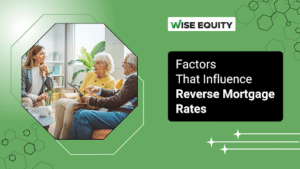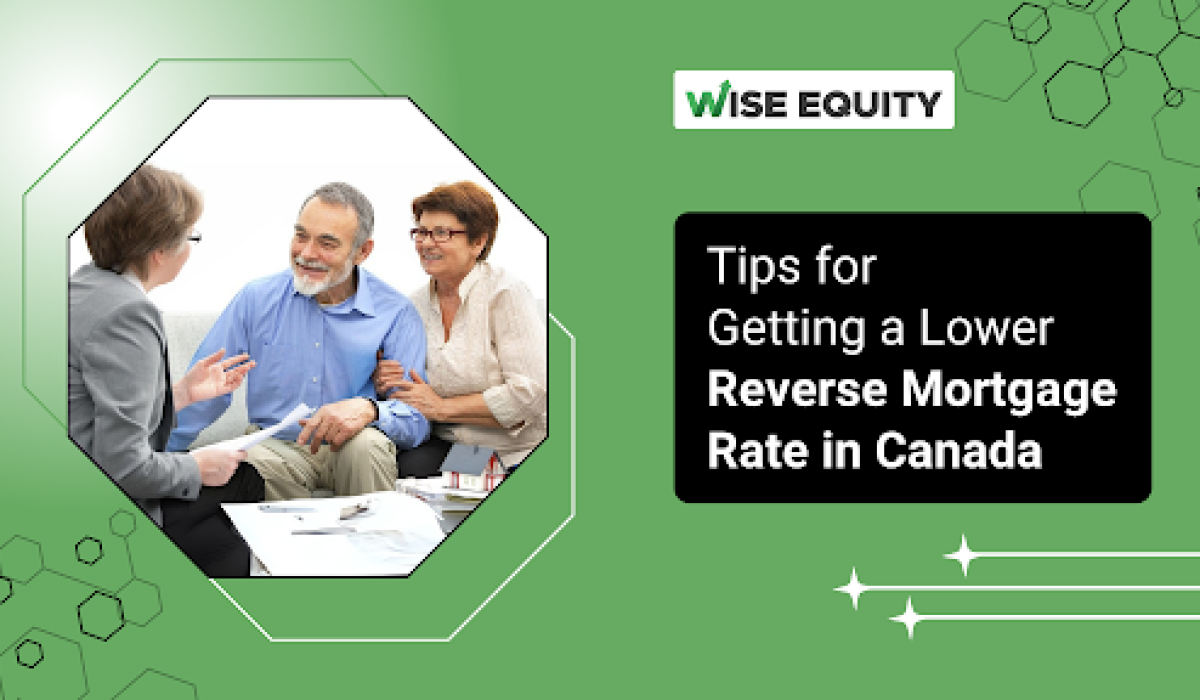As more Canadian homeowners over 55 explore ways to boost retirement income, reverse mortgages have become an increasingly popular choice. However, one critical factor that determines how much you’ll pay in the long run is the reverse mortgage rate. A small difference in the rate can significantly impact how much equity you retain over time.
If you’re considering this financial tool, learning how to get a lower reverse mortgage rate is key to making the most of your home’s value. In this article, you’ll learn what affects these rates, how to compare options, and expert tips to help you save—without sacrificing flexibility.
What Is a Reverse Mortgage Rate?
A reverse mortgage rate is the interest charged on the amount you borrow from your home equity. Unlike traditional mortgages, you’re not making monthly payments. Instead, the interest accrues over time and is repaid—along with the principal—when you move, sell your home, or pass away.
Rates can be either fixed or variable, and they typically depend on:
- The lender
- The loan amount
- The type of payout you choose
- Market conditions
Currently in Canada, reverse mortgage rates tend to be slightly higher than those for traditional home equity lines of credit (HELOCs). However, they offer unique advantages such as no monthly payments and flexible access to tax-free funds.
Why Reverse Mortgage Rates Matter
Even though you don’t make monthly payments, a higher interest rate can erode your home’s equity faster. Over several years, this could mean tens of thousands of dollars in additional interest costs. That’s why it’s so important to find the most competitive rate available.
Additionally, a lower rate means:
- More preserved equity for your estate
- Less compounded interest over time
- More flexibility if you decide to repay early
Thankfully, providers like Wise Equity help you compare rates and plan types to ensure you get the best deal tailored to your needs.
Fixed vs Variable Reverse Mortgage Rates
Before locking in a plan, you’ll need to choose between a fixed or variable reverse mortgage rate. Here’s how they differ:
Fixed Rate:
- Interest stays the same throughout the term (usually 6 months to 5 years)
- Ideal if you prefer predictable borrowing costs
- May come with higher prepayment penalties
Variable Rate:
- Tied to the lender’s prime rate and fluctuates with the market
- Often starts lower than fixed rates
- Greater flexibility for prepayments or refinancing
Many Canadian seniors choose fixed rates for stability. However, if you plan to repay early or anticipate market shifts, a variable option could save you more in the long run.
Top Tips to Get a Lower Reverse Mortgage Rate
Here’s the part you’ve been waiting for—how to actually lower your reverse mortgage rate in Canada. Whether you’re just starting your search or narrowing down lenders, these tips can help you save:
1. Compare Multiple Lenders
This may seem obvious, but many homeowners stop at the first offer. Don’t. Different lenders offer varying rates, terms, and fee structures. For instance, Wise Equity allows you to compare options from top Canadian reverse mortgage providers so you don’t leave money on the table.
2. Opt for a Shorter Fixed Term
Choosing a shorter term (like 6 months or 1 year) often comes with a lower rate. Yes, you’ll need to renew more frequently, but the lower interest upfront can help reduce the total amount owed over time.
3. Improve Your Property’s Appraised Value
The more your home is worth, the better your loan terms may be. Before applying, consider boosting curb appeal or tackling minor upgrades. Lenders like Wise Equity take appraisal value seriously when setting your reverse mortgage rate.
4. Borrow Only What You Need
Some people are tempted to borrow the maximum allowed. But interest is charged on the full amount, so drawing only what you need—especially if you’re choosing a lump sum—helps reduce your costs.
Alternatively, using a line of credit option and borrowing in smaller increments can dramatically lower how much interest accrues early on.
5. Choose a Trusted Reverse Mortgage Specialist
Working with a knowledgeable broker or advisor gives you access to lender-specific promotions and exclusive rate offers. Wise Equity, for example, specializes in finding custom reverse mortgage solutions and works directly with you to find competitive rates.

Factors That Influence Reverse Mortgage Rates
To better understand how lenders determine your rate, consider the following variables:
- Age of the borrower: Older borrowers may access more equity but also receive slightly different rate structures.
- Home location and value: High-value homes in major cities often qualify for better terms.
- Loan structure and payout type: Lump sums typically come with higher rates than flexible or staged payout plans.
- Market interest trends: Like all loans, reverse mortgage rates move with the broader economy.
Being aware of these factors can help you better position yourself when negotiating your reverse mortgage terms.
Reverse Mortgage Rate vs Other Lending Options
How does the reverse mortgage rate stack up against other borrowing tools like a HELOC or traditional mortgage?
| Loan Type | Typical Interest Rate | Monthly Payments | Credit Score Needed |
| Reverse Mortgage | 6.5% – 8.5% | None | No |
| HELOC | 6.0% – 7.5% | Required | Yes |
| Traditional Loan | 5.0% – 7.0% | Required | Yes |
Although reverse mortgage rates may be higher, the absence of monthly payments and flexible access often outweighs the extra cost—especially for retirees living on fixed incomes. Brands like Wise Equity offer in-depth consultations to help weigh your options.
When Should You Lock in a Rate?
Timing matters. If interest rates are expected to rise, locking in a fixed reverse mortgage rate sooner can save you money. On the other hand, if rates are high now but predicted to fall, a variable option may offer more flexibility.
Monitoring trends and staying in touch with a specialist—like one from Wise Equity—ensures you make a strategic decision based on market conditions.
Conclusion
A reverse mortgage can offer Canadian seniors a valuable lifeline—turning home equity into financial freedom. But the interest rate you choose plays a huge role in the long-term cost of the loan. By following the tips above, comparing lenders, and understanding your plan options, you can secure the best possible reverse mortgage rate.
Don’t rush the process. Instead, partner with experienced advisors like Wise Equity who prioritize transparency, flexibility, and helping you save more of what’s yours.

